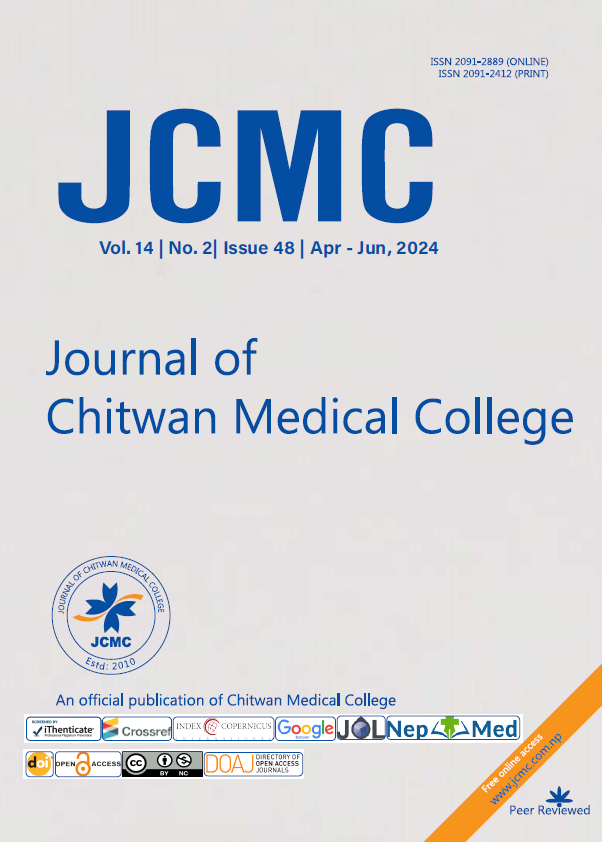CLINICAL PROFILE OF PATIENTS UNDERGOING PERMANENT PACEMAKER IMPLANTATION AT A TERTIARY CARE CENTER: A RETROSPECTIVE STUDY
DOI:
https://doi.org/10.54530/jcmc.1487Keywords:
Bradyarrythmias; Heart block; Permanent Pacemaker Implantation.Abstract
Background: Permanent Pacemaker Implantation is indicated in patients with symptomatic bradycardia, heart block, or other conduction abnormalities that result in a slow or irregular heartbeat. Each year about 1.25 million permanent pacemakers are implanted worldwide. In Nepal, we lack proper registry dedicated to PPI. We aimed to assess the clinical profile of patients undergoing PPI at a tertiary care center in Chitwan.
Methods: This was a retrospective cross-sectional study conducted in Unit of Cardiology, Department of Internal Medicine at Chitwan Medical College. Hospital records were reviewed for the patients who underwent PPI from 1st November 2016 to 30th August, 2023. Sociodemographic profile, indication, characteristics of PPI and in-hospital complications including mortality were recorded. Data was analyzed using IBM SPSS version 21.0. Categorical variables were presented as frequency/percentage and continuous variables were presented as mean and standard deviation
Results: A total of 224 patients were included. The mean age of the patients was 69.7 ± 12.7 years (Range: 7 – 94 years). There was a male predominance 125 (55.80%) among the patients.Hypertension was the most common comorbidity 102 (45.5%) followed by Diabetes Mellitus 47 (20.98%). Single chamber type of permanent pacemaker was the mostly used for pacing which accounted for 214 (95.53%) of the total cases. Complete heart block (CHB) was the most frequent indication of PPI 136 (60.71%), followed by sick sinus syndrome. Complication developed in 11 (4.91%) patients. Among them, lead displacement 4 (1.78%) was the most common complication.
Conclusions: In our study there was male predominance. Hypertension was most common comorbidity, Single chamber pacemaker was the commonest PPI and CHB was commonest indication. PPI at our center had minimal complications of which lead displacement was commonest complication.
Downloads
Published
Issue
Section
License
Copyright (c) 2024 Asraf Hussain, Shyam Raj Regmi, Bishnu Mani Dhital, Ram Narayan Kurmi, Garima Rijal, Farhat Jahan, Bipana Gurung

This work is licensed under a Creative Commons Attribution-NonCommercial 4.0 International License.



